Edgar Allan Poe’s “The Black Cat” is a haunting tale of guilt, violence, and the supernatural, exploring the darker aspects of human nature through a chilling narrative.
This story, like much of Poe’s work, delves into psychological decay and the blurred lines between reality and madness, captivating readers with its eerie and thought-provoking themes.
Available as a free PDF download, “The Black Cat” remains a timeless classic, offering insights into Poe’s mastery of Gothic literature and his enduring influence on modern storytelling.
Overview of Edgar Allan Poe’s Life and Works
Edgar Allan Poe (1809–1849) was a leading figure in Gothic literature, known for his dark and profound works. Orphaned early, Poe was raised by John Allan in Virginia, fostering a complex relationship. His writing career began with poetry, gaining acclaim for works like “Tamerlane” and “Al Aaraaf.” Poe pioneered detective fiction with “The Murders in the Rue Morgue” and captivated readers with “The Raven.” His life was marked by tragedy, including the death of his young wife, Virginia. Poe’s mysterious death at 40 remains unresolved. His legacy endures as a master of suspense and psychological exploration, influencing literature globally.
Publication History of “The Black Cat”
Edgar Allan Poe’s “The Black Cat” was first published in The Saturday Evening Post on August 19, 1843. The story gained immediate attention for its dark and unsettling themes, further cementing Poe’s reputation as a master of Gothic fiction. Its release coincided with Poe’s rising popularity, following the success of “The Murders in the Rue Morgue.”
Today, “The Black Cat” is widely available in various formats, including free PDF downloads. Editions like the one by José Menéndez and the Electronic Books Foundation ensure its accessibility for modern readers, preserving Poe’s haunting tale for new generations.
Thematic Significance of the Story
Edgar Allan Poe’s “The Black Cat” explores themes of guilt, violence, and psychological decay, delving into the darker aspects of human nature. The story examines how unchecked emotions like anger and alcoholism can lead to devastating consequences. Superstition and the supernatural are woven throughout, creating an eerie atmosphere that underscores the narrator’s spiraling madness. The tale also reflects Poe’s fascination with death and misfortune, using the black cat as a symbolic harbinger of doom. These themes, combined with Poe’s masterful storytelling, make “The Black Cat” a profound and enduring exploration of the human psyche’s darker corners.
Plot Summary of “The Black Cat”
The story follows a narrator whose affection for his black cat, Pluto, turns to cruelty under the influence of alcohol, leading to tragic events and the cat’s death. A mysterious second black cat appears, deepening the narrator’s guilt and psychological turmoil.
The Narrator’s Relationship with the Black Cat Pluto
The narrator initially adores Pluto, describing the cat as his beloved companion, with whom he shares a deep emotional bond. Pluto’s affectionate nature brings the narrator joy, but this relationship deteriorates as the narrator’s alcoholism worsens. His affection turns to cruelty, culminating in a horrific act of violence against Pluto; This event marks a turning point, revealing the narrator’s darker tendencies and psychological instability. The relationship with Pluto symbolizes the narrator’s internal struggle, transitioning from love to hatred, and ultimately to guilt and paranoia, which haunt him throughout the story.
The Tragic Events Leading to the Cat’s Death
The narrator’s relationship with Pluto takes a dark turn due to his growing alcoholism and increasingly violent temperament. One night, in a drunken rage, he mutilates Pluto by cutting out one of its eyes. This act of cruelty shocks even the narrator, but his remorse is short-lived. Later, in another fit of anger, he hangs Pluto, leading to the cat’s tragic death. The narrator’s descent into madness is marked by these horrifying actions, which symbolize his loss of moral control and the destruction of the one being that once brought him joy and companionship.
The Mysterious Appearance of the Second Black Cat
Following Pluto’s death, a mysterious black cat appears, strikingly similar to Pluto, except for a missing eye. The narrator, initially delighted, grows uneasy as the cat’s presence haunts him. Its constant companionship exacerbates his guilt and paranoia, symbolizing his inescapable remorse. The cat’s arrival coincides with the discovery of Pluto’s decomposing body, embedded in the wall the narrator built. This eerie sequence of events deepens the psychological tension, as the second cat becomes a haunting reminder of the narrator’s crimes and his spiraling descent into madness, blurring the lines between reality and the supernatural.
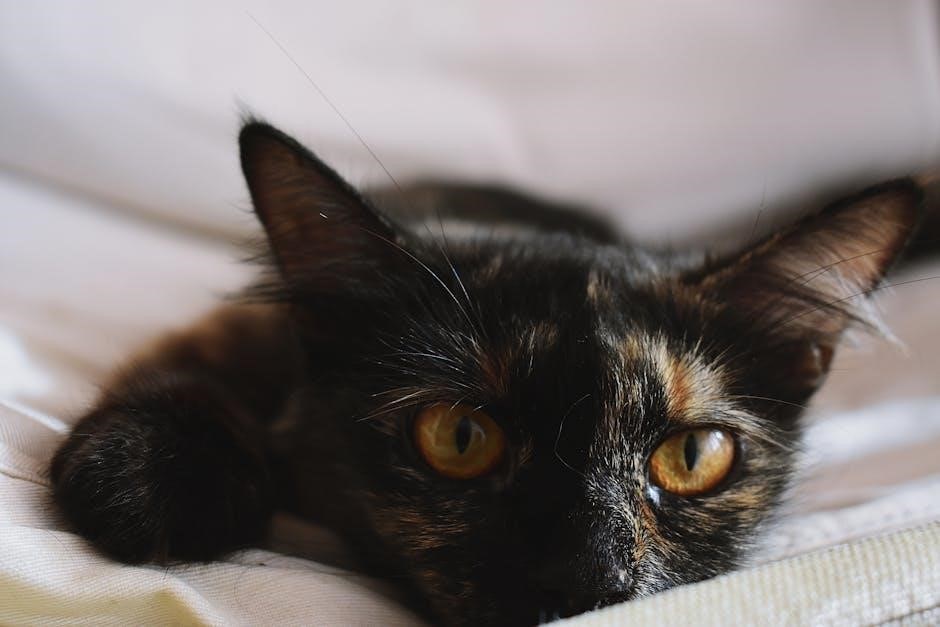
Key Themes in “The Black Cat”
Guilt, violence, and superstition are central themes, exploring the narrator’s psychological unraveling and the dark forces driving his destructive actions, reflecting Poe’s mastery of psychological horror;
Guilt and Psychological Decay
The narrator’s descent into madness is fueled by overwhelming guilt, as his cruelty toward Pluto haunts him, symbolizing the destructive power of unchecked emotions and moral decay.
Pluto’s unwavering loyalty contrasts with the narrator’s growing instability, highlighting the psychological turmoil that drives him to commit horrific acts, ultimately trapping him in a cycle of self-destruction and remorse.
The story underscores how guilt can manifest as paranoia, with the second black cat embodying the narrator’s inner torment, accelerating his psychological collapse and illustrating Poe’s profound exploration of the human psyche.
Violence and the Dark Side of Human Nature
The narrator’s escalating cruelty toward Pluto reveals the darker aspects of human nature, showcasing how unchecked emotions can lead to brutal acts of violence and moral corruption.
The mutilation and eventual death of Pluto symbolize the narrator’s complete surrender to his darker impulses, highlighting the destructive potential within individuals when reason is overshadowed by malice.
The story serves as a chilling exploration of how violence, often justified by irrational reasoning, can consume a person, leaving behind only remorse and the haunting presence of guilt, as seen with the mysterious second black cat.
Superstition and the Supernatural
The black cat, Pluto, embodies both the narrator’s deep-seated superstitions and the supernatural elements that permeate the story. The cat’s mysterious behavior and eerie presence amplify the narrator’s growing paranoia, blurring the line between reality and the supernatural.
The second black cat’s appearance, identical to Pluto, further intensifies the sense of doom and otherworldliness, suggesting a haunting connection between the narrator’s actions and a higher, unknowable force. This duality of fear and the unexplained drives the narrative’s chilling exploration of how superstition can unravel a man’s sanity and seal his fate.
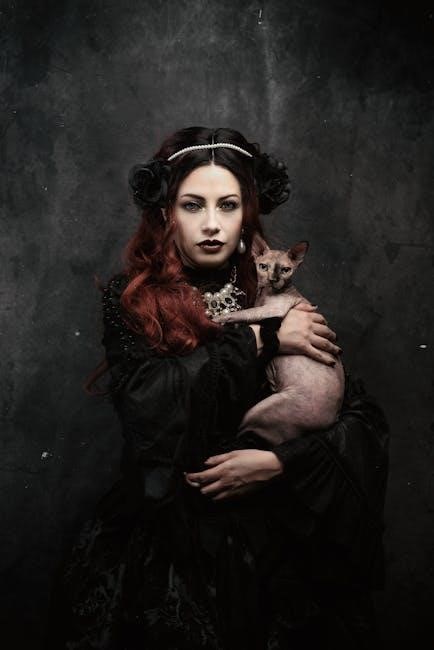
Symbolism in “The Black Cat”
The black cat symbolizes death and misfortune in Edgar Allan Poe’s story. The wall hiding Pluto’s body represents concealment of guilt, while the second cat embodies supernatural vengeance.
The Black Cat as a Symbol of Death and Misfortune
The black cat, Pluto, serves as a potent symbol of death and misfortune in Edgar Allan Poe’s story. Its mysterious presence and unusual size foreshadow tragic events, while its entirely black color evokes associations with mourning and ill omens. The cat’s loyalty contrasts with the narrator’s cruelty, symbolizing innocence betrayed. Pluto’s eventual death and the appearance of a second black cat further emphasize the inescapability of guilt and the supernatural forces at play. The cat’s imagery reinforces Poe’s exploration of darkness and the inevitability of fate.
The Wall and the Final Revelation
The wall in Poe’s “The Black Cat” holds profound symbolic significance, serving as a literal and metaphorical barrier. The narrator’s attempt to conceal his crime by entombing the cat within the wall ultimately leads to the story’s chilling climax. The final revelation—the appearance of the second black cat, its piercing cry, and the unearthing of the mutilated pet—underscores the futility of hiding guilt. The wall represents the narrator’s psychological collapse and the inescapability of his crimes, driving home the theme of guilt’s corrosive power and the supernatural’s role in exposing truth.
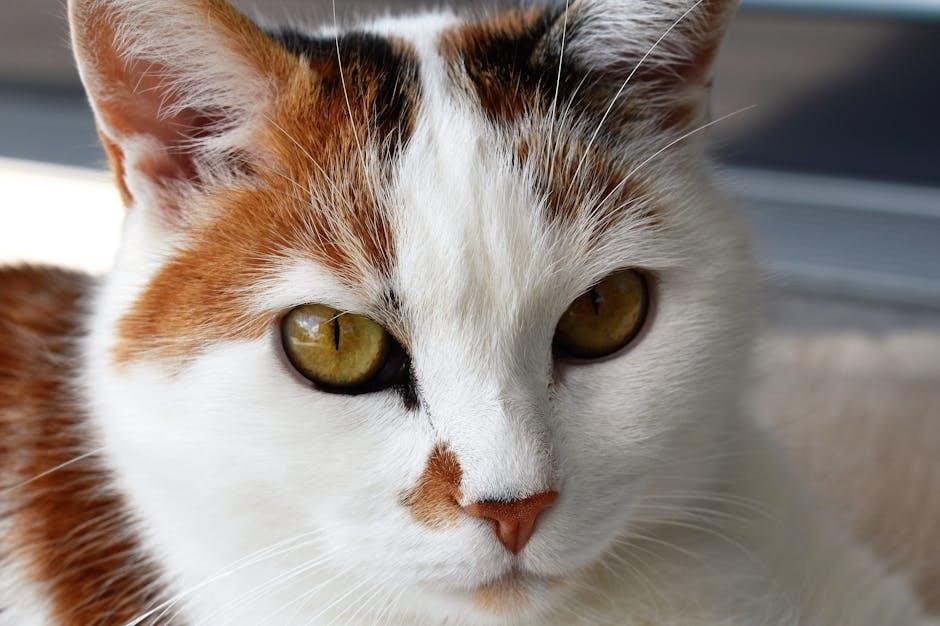
Pdf Versions of “The Black Cat”
Free PDF downloads of “The Black Cat” are widely available, including editions from the Electronic Books Foundation and Gothic Digital Series, perfect for educational purposes.
Free PDF Downloads and Sources
Free PDF versions of “The Black Cat” are accessible through various platforms, including the Electronic Books Foundation and the Gothic Digital Series.
These editions are designed for educational use, offering readers a convenient way to explore Poe’s classic tale of psychological decay and supernatural elements.
Additionally, sites like the UFSC repository provide downloadable formats, ensuring that the story remains accessible to a global audience interested in Gothic literature.
Popular Editions and Annotations
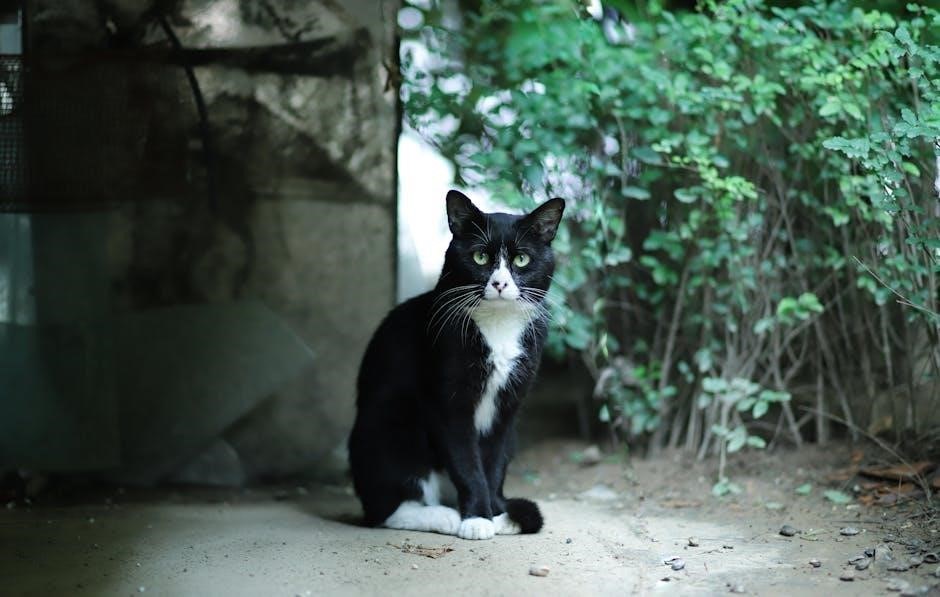
Notable editions of “The Black Cat” include annotated versions by scholars, offering deeper insights into Poe’s themes and literary techniques.
The Gothic Digital Series and the Electronic Books Foundation provide well-formatted PDFs, enhancing readability while preserving the story’s original essence.
Annotated editions often highlight symbolic elements, such as the black cat itself, and explore the psychological complexity of the narrator’s descent into madness.
These resources are invaluable for both casual readers and academic study, making Poe’s masterpiece accessible and engaging for modern audiences.
Adaptations and Interpretations
Filmmakers have long been inspired by “The Black Cat,” with adaptations ranging from Roger Corman’s horror films to modern reinterpretations in series like The Fall of the House of Usher.
Literary adaptations and cultural references continue to emerge, showcasing the story’s enduring influence on both cinema and contemporary media.
Film and Literary Adaptations of the Story
Edgar Allan Poe’s “The Black Cat” has inspired numerous film adaptations, including classic horror interpretations by Roger Corman and Vincent Price, which captured the tale’s eerie atmosphere.
Modern filmmakers continue to draw inspiration from the story, blending its themes of guilt and violence with contemporary storytelling techniques.

Literary reinterpretations also abound, with authors exploring the psychological depth of the narrator and the symbolic significance of the black cat in various creative ways.
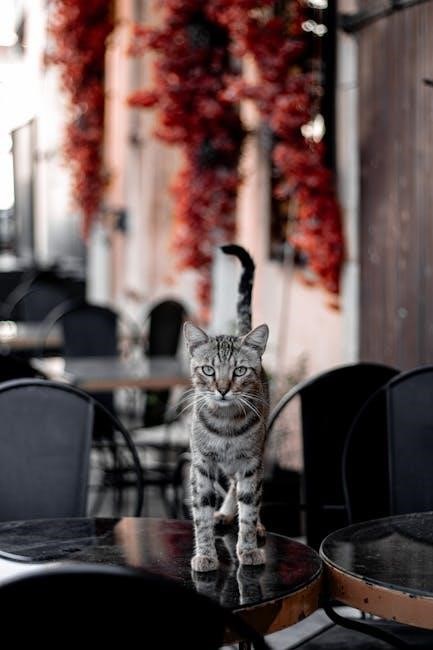
Cultural Impact and Modern References
Edgar Allan Poe’s “The Black Cat” has left an indelible mark on popular culture, inspiring countless adaptations and references in film, literature, and art.
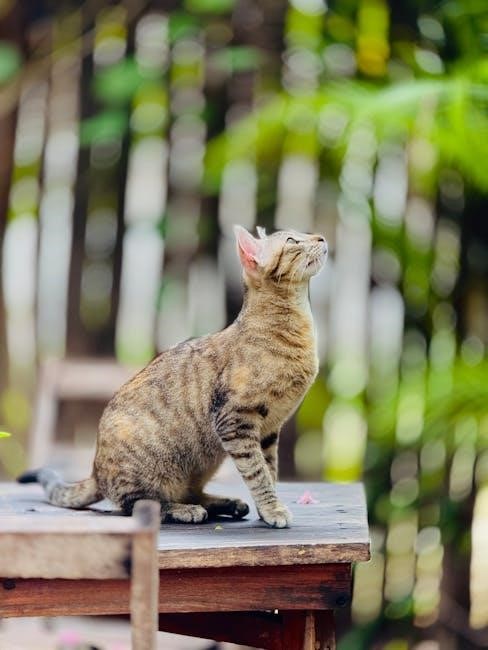
From sports teams named after the story to modern TV series like The Fall of the House of Usher, which nods to its themes, the tale’s influence is widespread.
Its exploration of guilt, violence, and the supernatural continues to captivate audiences, ensuring its relevance in contemporary media and cultural discourse.
Edgar Allan Poe’s “The Black Cat” remains a timeless masterpiece, its themes of guilt, violence, and the supernatural continuing to captivate readers and inspire modern adaptations.
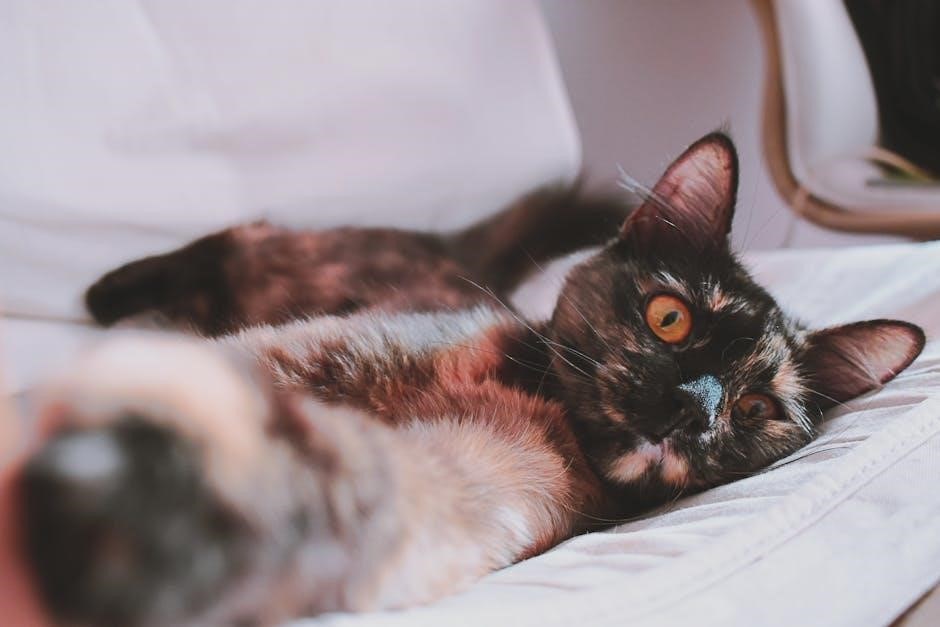
Why “The Black Cat” Remains Relevant Today
Edgar Allan Poe’s “The Black Cat” continues to captivate audiences with its timeless exploration of guilt, psychological decay, and the darker aspects of human nature. Its themes resonate universally, transcending time and culture. The story’s eerie and suspenseful narrative, coupled with its moral ambiguity, keeps readers engaged. Available as a free PDF, it remains accessible, ensuring its influence on literature and popular culture endures. Modern adaptations and references in film and media further highlight its relevance, proving Poe’s mastery of Gothic storytelling remains unparalleled and thought-provoking for contemporary audiences.
Final Thoughts on Poe’s Legacy
Edgar Allan Poe’s legacy endures as a master of Gothic literature, leaving an indelible mark on storytelling. His works, including “The Black Cat,” continue to inspire filmmakers, writers, and artists, showcasing his timeless appeal. Poe’s exploration of guilt, psychological complexity, and the supernatural resonates deeply, making his stories unforgettable. The availability of his tales in formats like PDF ensures his work remains accessible to new generations. His influence on modern culture, from film adaptations to literary references, underscores his enduring relevance. Poe’s ability to weave darkness and beauty remains unparalleled, cementing his place as a literary icon.
